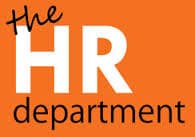These days you can’t evade commentary on what HR should be doing and assuming responsibility for. The list is endless and maybe even unreasonable.
How organizations structure their HR departments differs based on an innumerable amount of variables.
For starters, complexity of the organization, functional clarity and employee head count are some of the more common variables that account for how HR gets structured within an organization.
HR needs to change
But, the nature of work is changing and so Human Resources is also changing as a result.
This means rethinking the way “the way we have always done things.” In shifting from the “Personnel Mindset” to present day HR, we must also realize and admit that some of the ways that we chose to operate never worked and as such will not be sustainable in the current business climate.
I’ve spoken a lot in the past about how we move forward as a discipline, but there is an elephant-in-the-room and it is about how we are structured.
It doesn’t matter how many strategies, tips, or insights I or any other expert provides to you as an HR practitioner, if your HR department is so fat that it is bulging from all of the unnecessary sub-disciplines dragging it down from a both a functional and financial perspective – HR will be inert.
We can’t be all things to all people…
Perfection is impossible and while we are still collectively trying to get there – we miss the mark everytime, because some of our beloved sub-functions need go or need a makeover.
Here are three examples:
1. Exhibit A: Payroll the odd HR stepchild. If you are a small to mid-size company, Payroll may be fine under HR. Still, I never understood how this was an HR function at all. I get that there is FLSA and other labor considerations that scream HR. Nevertheless, anytime a function is handling funds for an organization – I immediately think Finance. If you ask me, Payroll belongs under Finance with maybe a dotted-line reporting structure to HR because of the nature of their work. Why HR in many organizations remain responsible for this function is beyond me.
2. Exhibit B: Very few employees trust Employee Relations/Conflict Mediation owned by the HR function. Let’s talk about transparency and HR’s “open door’ policies around employee complaints and disputes. I worked as a recruiter for many years. Transitioning to a Talent Management professional was easy, because I had so much practice being an ear for employee’s who didn’t trust HR let alone the conflict mediation/employee relations process.
Some of the concerns expressed over the years have been —
- ” The ER Specialists never listen to our side, they immediately jump to defend the managers and/or organization.”
- ” I told the HR Business Partner something in confidence about my work environment and now everyone in my department is treating me indifferently.”
- “I see my manager go to lunch with the ER Specialist all of the time, I could never go to her with my issue.”
When it comes to Employee Relations, it may make sense to have this be a standalone function separate from HR. HR needs to be aware of the volume complaints and may even partner with them on approach and resolution of larger organizational issues. Outside of that, you may find employees being a little more transparent with what’s going on when this is no longer under HR.
Additionally, I like when functions that have a direct effect on Talent Management report directly to the CEO. It gives frequent ER and discrimination issues the visibility needed to stop them in their tracks.
3. Exhibit C: Diversity and Inclusion should be an organizational strategy, not a slapped-together group in HR. I could be wrong, but I’m pretty sure I’m not. Unless there is a true dedication to fostering a diverse and inclusive environment from the top, HR is where Diversity and Inclusion strategy goes to die.
Why you may ask? Every organization I have been in has suffered a year or more of a meager HR budget. In almost every instance, the first function to have their funds tremendously cut, was the Diversity group followed by Learning & Development.
I don’t think any organization can afford to defund or piece together a Diversity function lacking in both financial and strategic support in today’s social and political climate. In my humble opinion, this sub-function needs a direct-line to the CEO as well.
The challenge: Be lean and flexible
I could make the case for a few more functions to move based on company specifics. The point is: no one should be structuring HR as it has been for the past 30 years because that is what has been done.
The focus and challenge for HR is to be lean and flexible. To be both means we need to take a hard look at what we have on our plate and start creating smaller, smart portions of HR so we are able to focus and add value where we are truly needed.
This was originally published on Janine Truitt’s The Aristocracy of HR blog.
